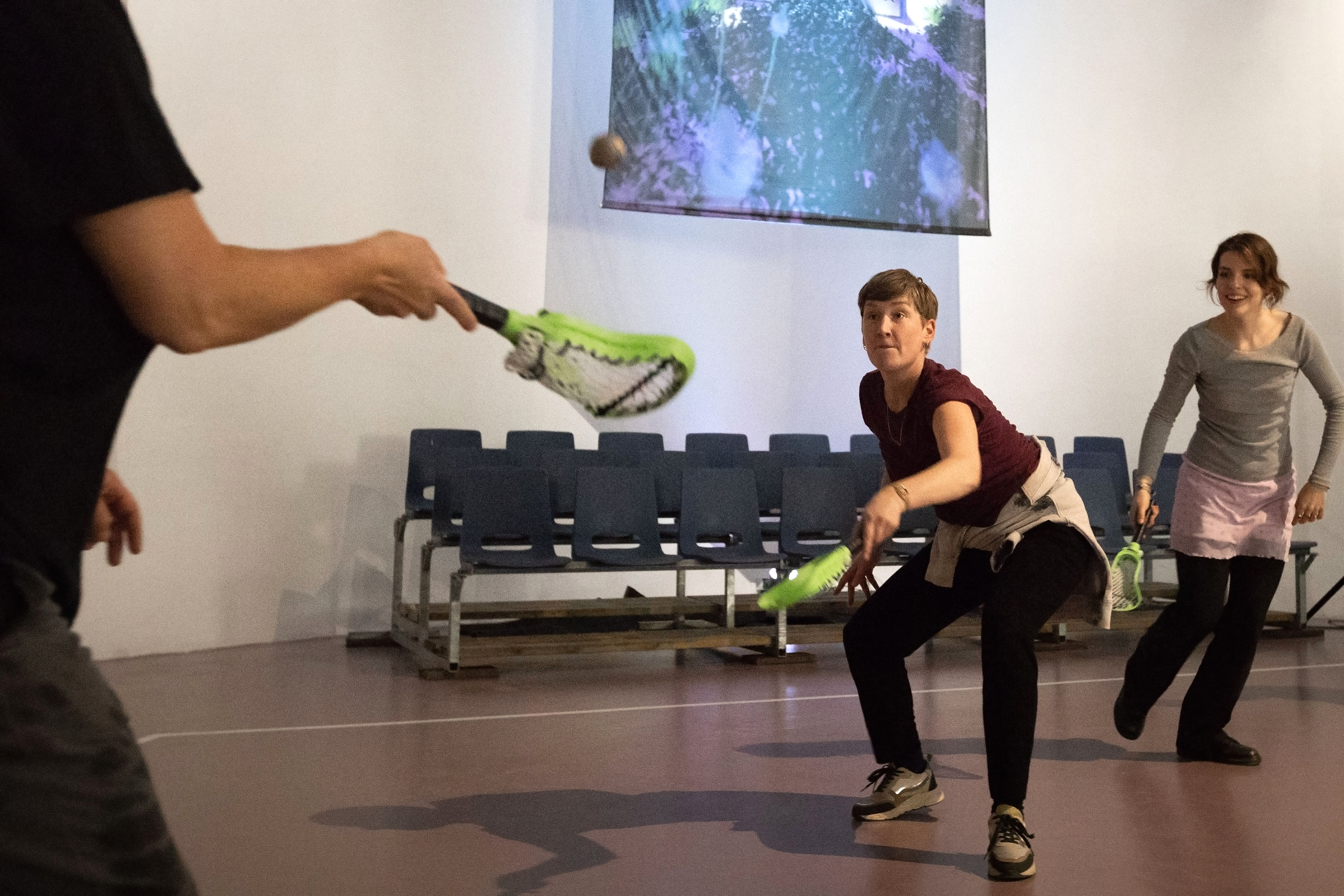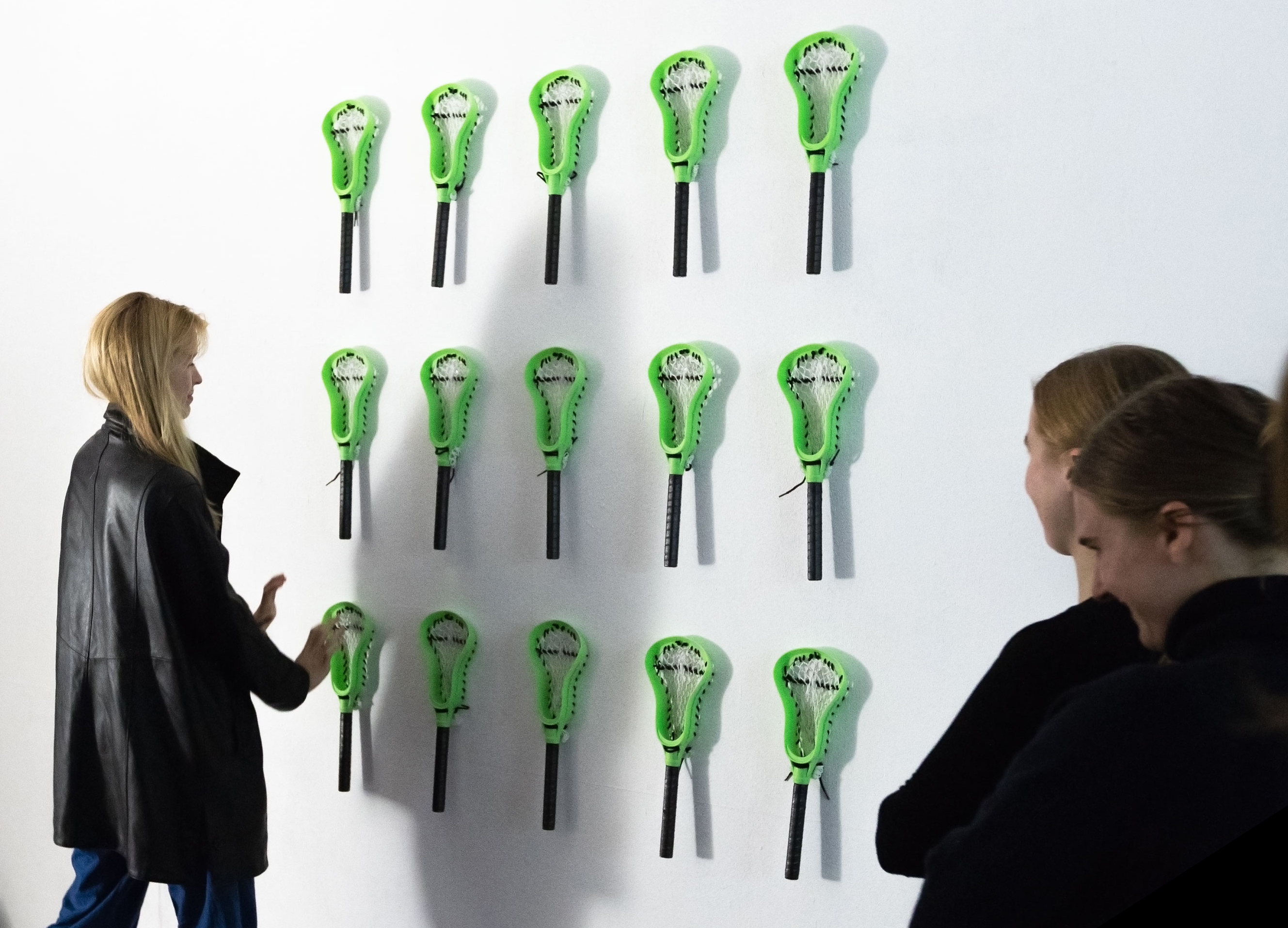What
This game is a revised version of the traditional sport Lacrosse. For this sonic version, Gabriel designed rackets fitted with sensors to produce a generative soundscape. In this game, the teams are defined by a specific sound and the only way to find your team is to carefully listen.
Why
Studies reveal that in a school class context, mainly boys' names are called out during the games. Boys shout to one another to pass and receive the ball, dominating the central space with their bodies and voices. The girls often end up at the edges of the playground, learning from a young age that ‘their space’ is a peripheral and quiet one. Following this, Sonic-Cross proposes an alternative sport game that uses sound and new modes of listening to alter how power is usually performed through voice.
How
Sounds are produced only when a player interacts with the ball, meaning that the gameplay needs to be shared equally, so that the whole team is identified. In this way, the games foster new forms of engagement towards one another by bringing our attention back and listening to the subtle gestures and sounds players make and the space they take up.


